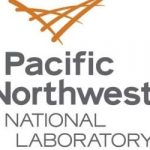An Affordable, Quantum‐Limit‐Approaching Sensing Chip for Trace Chemical Analysis
(AdvancedScienceNews) University at Buffalo researchers are reporting an advancement of a chemical sensing chip that could lead to handheld devices that detect trace chemicals — everything from illicit drugs to pollution — as quickly as a breathalyzer identifies alcohol.
The chip, which may also have uses in food safety monitoring, anti-counterfeiting, and other fields where trace chemicals are analyzed, is described in a study published in the journal Advanced Optical Materials.
When biological or chemical molecules land on the chip’s surface, some of the captured light interacts with the molecules and is “scattered” into light of new energies. This effect occurs in recognizable patterns that act as fingerprints of chemical or biological molecules, revealing information about what compounds are present.
Because all chemicals have unique light-scattering signatures, the technology could eventually be integrated into a handheld device for detecting drugs in blood, breath, urine and other biological samples. It could also be incorporated into other devices to identify chemicals in the air or from water, as well as other surfaces.
The sensing method is called surface-enhanced Raman spectroscopy (SERS).
The team used four molecules (BZT, 4-MBA, BPT, and TPT), each with different lengths, in the fabrication process to control the size of the gaps in between the gold and silver nanoparticles. The updated fabrication process is based upon two techniques, atomic layer deposition and self-assembled monolayers, as opposed to the more common and expensive method for SERS chips, electron-beam lithography.
The result is a SERS chip with unprecedented uniformity that is relatively inexpensive to produce. More importantly, it approaches quantum-limit sensing capabilities,



















